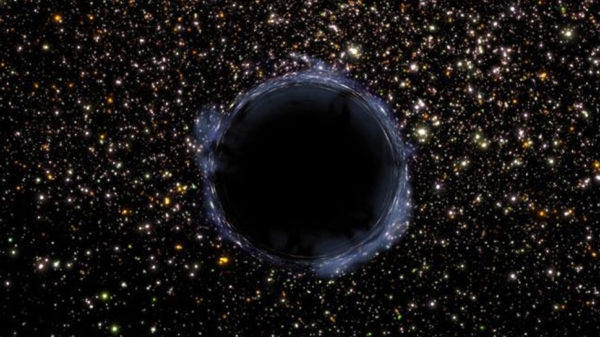There may be tens of thousands of black holes at the centre of the Milky Way Galaxy, say scientists who have discovered a dozen of them, lending support to a decades-old prediction.
For over twenty years, researchers have searched unsuccessfully for evidence to support a theory that thousands of black holes surround supermassive black holes (SMBHs) at the centre of large galaxies.
Researchers have now discovered a dozen black holes gathered around Sagittarius A* (Sgr A*), the supermassive black hole in the centre of the Milky Way Galaxy.
From their observations, they conclude that there must be at least 10,000 isolated black holes in the area surrounding Sgr A*.
“The Milky Way is really the only galaxy we have where we can study how supermassive black holes interact with little ones because we simply can’t see their interactions in other galaxies,” said Chuck Hailey, from Columbia University in the US.
Extensive fruitless searches have been made for black holes around Sgr A*, the closest SMBH to Earth and therefore the easiest to study.
Sgr A* is surrounded by a halo of gas and dust that provides the perfect breeding ground for the birth of massive stars, which live, die and could turn into black holes there.
Additionally, black holes from outside the halo are believed to fall under the influence of the SMBH as they lose their energy, causing them to be pulled into the vicinity of the SMBH, where they are held captive by its force.
While most of the trapped black holes remain isolated, some capture and bind to a passing star, forming a stellar binary.
Failed attempts to find evidence have focused on looking for the bright burst of X-ray glow that sometimes occurs in black hole binaries.
“It’s an obvious way to want to look for black holes, but the Galactic Centre is so far away from Earth that those bursts are only strong and bright enough to see about once every 100 to 1,000 years,” Hailey said.
To detect black hole binaries then, researchers realised that they would need to look for the fainter, but steadier X-rays emitted when the binaries are in an inactive state.
“When black holes mate with a low mass star, the marriage emits X-ray bursts that are weaker, but consistent and detectable,” Hailey said.
“If we could find black holes that are coupled with low mass stars and we know what fraction of black holes will mate with low mass stars, we could scientifically infer the population of isolated black holes out there,” he said.
Researchers turned to archival data from the Chandra X-ray Observatory to test their technique. They searched for X-ray signatures of black hole-low mass binaries in their inactive state and were able to find 12 within three light years, of Sgr A*.
They then analysed the properties of the identified binary systems and extrapolated from their observations that there must be anywhere from 300 to 500 black hole-low mass binaries and about 10,000 isolated black holes in the area surrounding Sgr A*.
“This finding confirms a major theory and the implications are many,” Hailey said.
“It is going to significantly advance gravitational wave research because knowing the number of black holes in the center of a typical galaxy can help in better predicting how many gravitational wave events may be associated with them,” he said.
“All the information astrophysicists need is at the center of the galaxy,” he added.



Leave a reply